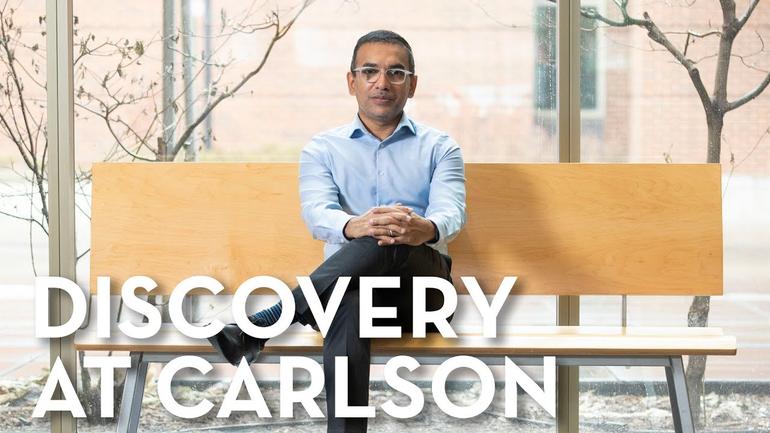
Anant Mishra: How a pandemic affects vaccine supply and demand
Tuesday, May 19, 2020
By its nature, an infectious disease outbreak is almost always a disruptive event. But when it crosses global borders and turns into a pandemic, those disruptions magnify in intensity. Supply chains slow down. Markets tumble. Economic productivity lags.
And that doesn’t include the devastating human toll. The 2019 Novel Coronavirus (COVID-19) is a current example, but we can also consider the year-long H1N1 flu outbreak that began in April 2009. The U.S. Centers for Disease Control and Prevention estimates that pandemic killed between 151,000 and 475,000 people around the world, with many of those victims in emerging economy nations.
As Carlson School Associate Professor Anant Mishra has discovered, the demand shock brought on by the H1N1 pandemic also had an unanticipated impact on one emerging nation—India. And that impact led to fundamental and lasting changes in a key sector of the country’s economy.
Mishra undertook his research with a number of questions in mind. But one stood out: How does a country’s pharmaceutical supply chain react when the vast majority of its citizens might be under the threat of a major infectious disease outbreak?
Influenza in India
India offered an ideal test case for that query. On one hand, much of the nation’s populace lives in its densely populated urban centers, a situation that helps viruses spread rapidly. “In addition, due to such factors as a lack of disposable income, Indians typically don’t get preventative vaccinations for illnesses such as the flu,” Mishra says. “At the same time, India does have a thriving vaccine manufacturing sector owing largely to its expansive Universal Immunization Program (UIP) and the quest to be self-sufficient in production of primary vaccines. But its domestic flu vaccine market was underdeveloped in 2009. Given the lack of demand, Indian vaccine makers had little incentive to create flu vaccines.”
For years, multinational vaccine manufacturers had stepped in to meet that minimal demand. But the H1N1 outbreak created a massive shock on the Indian market, leading to a sudden and critical need for flu vaccines. And given the nature of the pandemic, that jolt extended around the world, making it practically impossible for the multinationals to adequately service the Indian market. “The size and scope of the pandemic pulled them in numerous directions,” he says. “They had to supply vaccines all over the world, including to their home countries.”
With the situation growing in severity, India’s domestic vaccine manufacturers mobilized quickly. Within a year, they had developed several H1N1 vaccines with the first vaccine launched in June 2010. While those efforts saved lives, Mishra’s research shows they also fundamentally reshaped India’s flu vaccine market. “Production, R&D, and overall investments in supply chain among domestic manufacturers remained high, even after the pandemic subsided,” Mishra explains. “That’s understandable. Once you build capacity and develop expertise, it’s natural to look for ways to become more efficient and capture more of the market.”
As a point of comparison, Mishra also examined India’s markets for primary vaccines such as polio, tetanus, and more. None exhibited the same spike as the influenza vaccine makers during the pandemic.
Preparing for the future
As the COVID-19 pandemic painfully illustrates, infectious disease outbreaks will continue to be a global menace—and one that’s not only devastating for emerging economies, but also for developed economies dependent upon foreign manufacturing. “And that raises important questions relating to vaccines, pharmaceutical, and healthcare products,” Mishra notes. “First, can emerging markets really rely on multinationals in times of crisis for these products? Second, can developed economy markets continue to rely on foreign manufacturing for these products? These results indicate that they can’t fully depend on them during large-scale disease outbreaks. To help ensure the safety of their populations,

